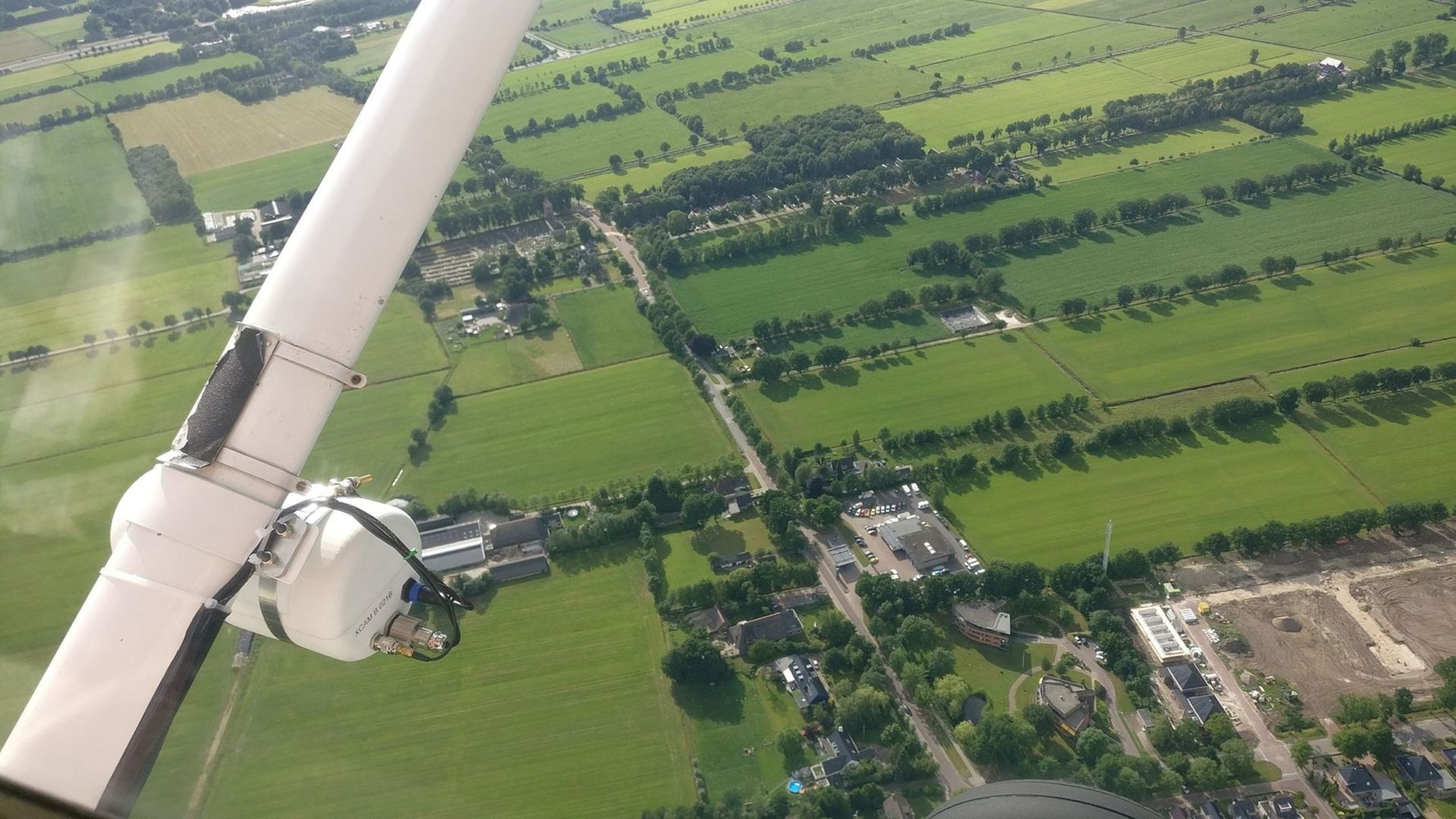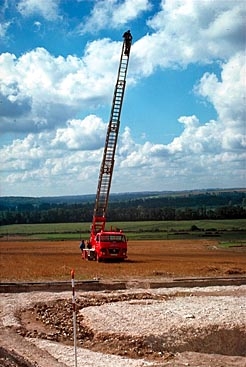- Home
- Prospecting
- The choice of aircraft
Taking pictures of an excavation of a circular enclosure from the top of a fireman's ladder.
Small flying club airplanes
For the most part these are quite suitable. Slow, high-winged airplanes like the Piper J3 are perfectly suited for aerial archaeology. Their hourly cost is low, but they are harder and harder to find in clubs, which are changing over to the high-wing Cessnas. This type of plane is faster but also more cumbersome.
The visibility in a Cessna is very good. Nevertheless, during tight turns, the wing has a tendency to get in the way of the camera. As for planes with low wings, like the Jodel, the Ralleye, the Fournier and the Robin, they are much more convenient than is generally thought, as long as the photographer sits up frontn where the visibility is excellent. In the Ralleye, the wing-flaps reduce the risk of stalls at low speeds or in tight turns.
Ultralights
Ultralight plants are marvelous pieces of equipment and have become increasingly reliable. They have the advantage of flying very slowly at low altitudes and can easily land in any field — as long as the owner agrees.
Nevertheless, these aircraft can only fly in good weather, and in winds of less than 40 km/hour. They are a source of great joy to the aerial observer, who feels as free as a bird, particularly in the first generation ultralights, the so-called "weight-shift" planes (without joysticks). They were gradually replaced by the so-called "three-axis" ultralights, which are usually equipped with fairing and which, in reality, are genuine little planes (with gull wing doors, like the Pipers, that are very practical for the photographer or filmmaker).
The only inconveniences? Their weight, which regulations limit to 450 kg at takeoff (including two passengers and fuel), and the fact that they cannot stay in the air for more than three to three and a half hours. It is clear that ultralights will never replace more conventional planes for prospecting on a regional level. In addition, they can barely be used for winter flights due to bad weather. On the other hand, they are perfect for local flyovers in sunny weather, and for monitoring the progress of the removal of the top layers of soil on large-scale excavations.
A high-wing Piper plane, perfectly suited for aerial archaeology.
Roger Agache aboard an ultralight.
Other types of aircraft
Certain helicopters tend to vibrate in a way that makes taking pictures difficult. In addition, their hourly cost is much higher and they are harder to come by. Dirigibles are excellent for observation, but their poor maneuverability makes them pretty much unsuitable.
Small remote-controlled planes, kites, and small tethered balloons are makeshift possibilities, even if they could be useful in certain cases (no-fly zones or archaeological digs that need to be photographed frequently).
A long ladder, such as firefighters use, is sometimes very useful for photographing small excavations where very low altitude flyovers should be avoided — they are extremely dangerous as well as inefficient.



